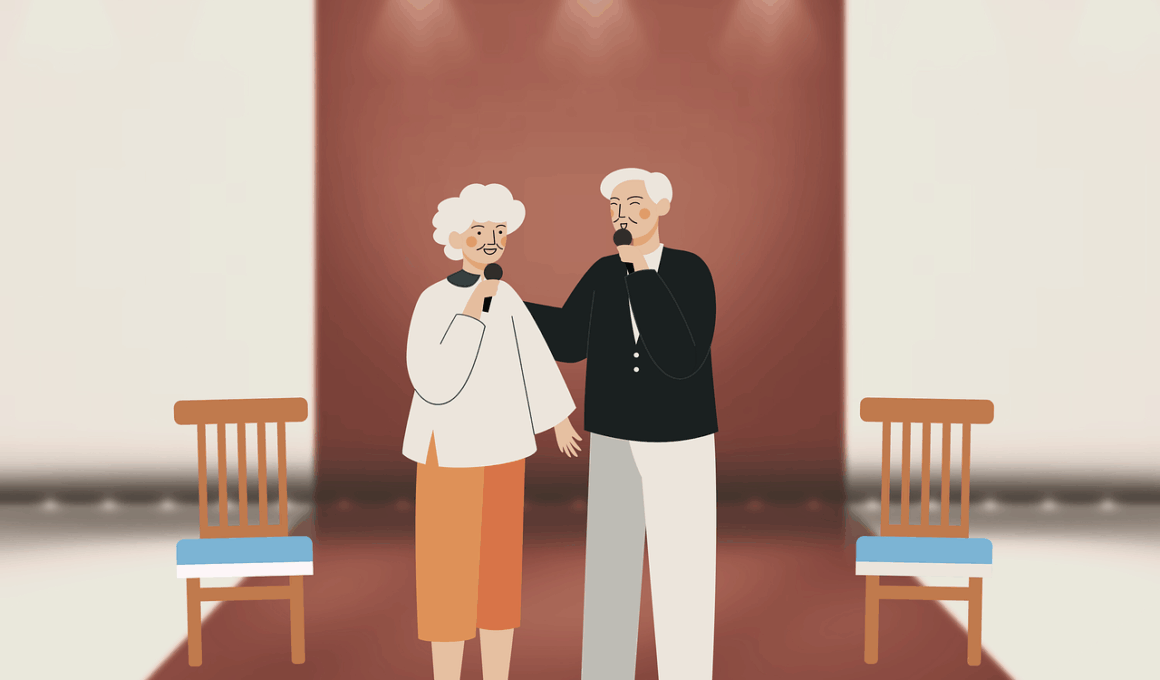Social Fitness Apps Tailored to Senior Users
As the world becomes increasingly digital, social fitness apps specifically designed for senior users have emerged. These applications not only promote physical activity but also foster community interactions among older adults. Engaging in physical fitness is vital for maintaining health, reducing the risk of chronic diseases, and enhancing overall well-being among seniors. The unique needs of seniors, including mobility limitations and social isolation, are carefully considered during development. Features like user-friendly interfaces, larger text sizes, and simplified navigation make the apps accessible to older adults. Additionally, these platforms encourage social interaction, allowing users to connect with friends and family. Community-building features, such as group challenges and shared goals, help strengthen ties and combat loneliness. Platforms can also provide personalized fitness plans based on individual capabilities. Real-time feedback encourages seniors to stay active, track progress, and reach their goals. Therefore, social fitness apps effectively meet both the physical and emotional needs of older populations, empowering them to lead healthier, more active lives. The combination of physical workout features and social connectivity is essential for fostering a supportive community among seniors.
These social fitness apps are designed with intentionality to address the unique fitness needs of senior users. One of the spectacular features is their ability to choose from a range of activities that suit various fitness levels. Some common activities found on these apps include walking, stretching routines, and low-impact aerobics that cater to different individual abilities. Moreover, these apps provide access to instructional videos, enabling seniors to perform exercises correctly, thus minimizing the risk of injury. Many applications also promote accountability by allowing seniors to share their fitness accomplishments with friends or family members. This social aspect motivates seniors to stay committed to their fitness routines. Progress tracking is another crucial feature, enabling users to observe improvements in their strength and mobility over time. Additionally, some apps offer virtual classes or webinars on nutrition and wellness, providing a holistic approach to aging well. The advantage of being part of a community within these apps fosters a sense of belonging, which is critical for mental health. Connecting with peers creates friendships and encourages participants to exercise regularly, positively impacting their well-being.
Benefits of Community Support in Fitness
The social fitness apps designed for seniors hinge on the benefits of community support in enhancing motivation and accountability. Users can engage in friendly competitions with peers or challenge each other to reach specific fitness targets, making the experiences more exciting and fulfilling. Participating in group challenges has proven beneficial in pushing seniors to stay dedicated to their routines, as they feel embraced and encouraged by fellow users. This supportive community often results in shared successes, whether it’s achieving daily steps or completing a series of workouts. Group dynamics amplify the importance of social connections, which can combat feelings of isolation commonly experienced in older adults. Furthermore, having access to a community allows seniors to share personal stories, tips for wellness, and even struggles, creating deep-seated bonds. Social fitness apps also often include forums or chat functions, enhancing this communal experience. Benefits extend beyond physical activity, as support networks provide emotional resilience and improve users’ overall quality of life. These apps help seniors acknowledge and celebrate each other’s achievements, reinforcing a positive atmosphere focused on health and happiness.
Moreover, many seniors may possess concerns about technology barriers when it comes to using social fitness apps. Yet, developers recognize this challenge and strive to create user-friendly systems. Many apps include tutorials or support systems, guiding older adults through the process of setting up profiles and linking to their health devices. They often feature step-by-step instructions tailored for users with limited technological skills. Furthermore, some applications incorporate voice commands or simplified interaction systems to assist users unfamiliar with extensive menus. This attention to inclusivity is vital as it allows more seniors to participate and benefit from fitness technologies. Many platforms also offer customizable settings, enabling users to adjust text sizes or colors to enhance readability. As user engagement grows, technology becomes less daunting, encouraging seniors to take control of their health effectively. With support from family members or trained professionals, seniors can successfully navigate these technological advancements. By addressing these barriers, social fitness apps empower older adults to embrace technology, enabling them to connect and share experiences within a community that values health.
Integrating Health Monitoring
Another exceptional feature of social fitness apps for seniors includes integrated health monitoring systems. These features allow users to track vital health metrics, encompassing heart rates, calorie burn, and hydration levels. With this data readily available, seniors can better understand their personal health trends, which significantly contributes to healthier living. Additionally, the ability to share health insights with family members or healthcare providers enhances accountability and care. Some apps even facilitate direct communications with healthcare professionals, ensuring that seniors can receive immediate guidance on their progress or health concerns. This symbiotic relationship between fitness and health monitoring provides seniors with a comprehensive view of their well-being. Many platforms may also send reminders for medication or physical activity prompts, effectively helping integrate health management into daily routines. Real-time analytics empower older adults to make informed decisions about their fitness journeys, allowing them to adjust goals and consult with specialists accordingly. As the healthcare landscape continues to evolve, social fitness apps represent a significant innovation in promoting proactive wellness for seniors through adequate health tracking.
Furthermore, many social fitness apps emphasize the importance of gamification in enhancing user engagement. The competitive aspects added to fitness routines encourage seniors to push beyond their comfort zones. Gamified experiences, such as earning badges for completed challenges or receiving points for consistent workouts, create a fun and engaging environment. This element of enjoyment is crucial in encouraging regular participation. By making fitness feel rewarding and less tedious, seniors are more likely to stick with their routines over time. Leaderboards allow users to view their standings compared to peers, fostering a healthy sense of competition and pushing individuals to elevate their performances. Additionally, these features allow seniors to participate in events or challenges organized by the app, further amplifying user engagement. Participants can form partnerships with other users, strengthening the sense of community while also focusing on their health goals. Gamification successfully breaks the monotony sometimes associated with traditional fitness programs. By incorporating playful elements that appeal to older audiences, these apps contribute to improving both physical and mental health. Ultimately, gamified fitness routines deepen satisfaction in staying active.
The Future of Fitness for Seniors
Looking ahead, social fitness apps for seniors are poised to revolutionize how older adults approach fitness and social engagement. Several aspects drive this transformation, such as the advancing technology, changing perceptions toward aging, and the growing emphasis on health and wellness. As tech-savvy seniors enter the market, app developers will continue to innovate, introducing more tailored features that cater to this demographic’s evolving needs. The future also holds the promise of virtual reality engagements, where seniors could partake in immersive fitness experiences or social gatherings without leaving home. These advancements will address both physical activity and feelings of belonging among senior users. Community support will remain an integral component, with new features fostering inclusivity and strengthening connections among older adults. As the health and fitness industries recognize the social aspects of wellness, the development of these technologies will likely cultivate healthier lifestyles and enrich the lives of seniors. Social fitness apps can bridge gaps of physical limitation and social interaction, ensuring that older generations thrive in interconnectedness, ultimately leading to meaningful and healthy aging.
In conclusion, the rise of social fitness apps tailored for seniors offers unparalleled opportunities for improving physical health and fostering community spirit. These apps address specific needs related to fitness while creating meaningful social connections among older adults. Through user-friendly interfaces, community support, integrated health monitoring, and innovative gamification, these platforms enhance engagement and motivation for seniors. With a focus on empowering older adults with fitness technology, they successfully combat isolation and promote an active lifestyle. The future is bright as technology continues adapting to provide seniors with safe and enjoyable ways to stay fit and connected. Utilization of these tools leads to greater independence and improved quality of life. Thus, social fitness apps serve as a resourceful bridge, linking health, technology, and community, making them essential in the aging process. Investing attention into this realm can yield incredible benefits for an emerging population eager to embrace active aging. Therefore, as these applications continue to expand, so too does their potential for positive impact within our communities, ultimately creating healthier and happier environments for our seniors.


